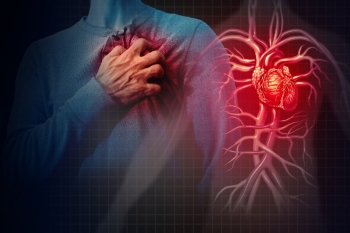profile/626IMG-20200707-WA0025.jpg
Ellaella

Argentine Football Maradona Undergoes Successful Brain Surgery
~3.2 mins read
Argentine football great Diego Maradona underwent successful brain surgery for a blood clot in a specialist private clinic in Buenos Aires on Tuesday, his doctor said
“We managed to successfully remove the clot. Diego coped well with the surgery,†Leopoldo Luque said at the icon’s private clinic in the capital Buenos Aires.
“It’s under control, there’s a little drainage (of blood). He’ll remain under observation.†World Cup winner Maradona had been taken to hospital in La Plata where he is the coach of top flight side Gimnasia y Esgrima on Monday for a series of tests after feeling unwell.
A scan revealed the blood clot, and on Tuesday he was transfered to the specialist clinic in a northern neighborhood of the capital.
Maradona, who turned 60 on Friday, has suffered ill health before. He has survived two heart attacks, and also contracted hepatitis and undergone gastric bypass surgery.
Groups of fans congregated outside the clinic with banners showing Maradona’s face and the words “Come on, Diego!†“I came with my wife to support the greatest player of all time,†fan Oscar Medina told AFP.
“Once more his health has played a trick on him but he has antibodies to recover with the help of the people,†added Medina.
“I feel very sad and impotent but we’re going to stay by his side until the last day,†said another fan, Matias Di Sciosio. Earlier on Tuesday, Luque insisted it was “a routine operation†and that Maradona was “lucid†and “calm.â€
Argentine media speculated the clot was the result of a blow to the head. Luque said the clot was “imperceptible†and that those suffering from one rarely remembered receiving a knock to the head.
“The operation consists of a small incision to drain the blood. In 24 or 48 hours the patient can leave the hospital,†neurosurgeon Raul Matera told TyC Sports channel. Anemic Maradona was transferred from the hospital in La Plata, 60 kilometers (37 miles) south of Buenos Aires, to the capital at 6:00 pm (2100 GMT) accompanied by one of his daughters, Giannina.
Dozens of Gimnasia fans outside the La Plata hospital chanted his name as he left. Earlier in the day, Luque claimed Maradona was feeling “much better and eager to leave†hospital but insisted that the Gimnasia Y Esgrima coach was suffering from anemia a lack of iron in his system and dehydration.
Luque said it has left him feeling “very weak, very tired.†After further tests, he was diagnosed with the blood clot. He also suggested Maradona’s lifestyle had contributed to his condition.
“He’s an elderly patient with many pressures in his life. It’s a time when we must help him. It’s very difficult to be Maradona,†Luque said of the star, who celebrated his 60th birthday on Friday.
He said it was a condition that also affected current Vice-President Cristina Kirchner when she was president. The doctor ruled out any link to the coronavirus pandemic, which is ravaging the South American country, much of it still under confinement.
Maradona is considered at high risk of coronavirus complications should he be infected. Last week, he began self-isolation for the second time after a bodyguard displayed coronavirus symptoms, though he later tested negative.
He joined his players briefly at the club’s training ground on his birthday, but had obvious difficulty walking and had to be helped away by his assistants after staying only 30 minutes. “It breaks my heart to see him like this,†Giannina tweeted the next day.
‘He needs support’ – Maradona has difficulty retaining iron due to a gastric bypass surgery he underwent in 2005 to lose 50 kilograms (110 pounds), leaving him prone to anaemia, Luque said.
Though he has recovered from a well-documented addiction to hard drugs, Maradona takes medication in the form of tranquillizers and anxiolytics. “With a patient on medication, there are times when hospitalization serves to adjust that medication.
That’s good,†said Luque. Gimnasia fans flocked to the La Plata clinic to leave messages of support for the ailing icon. “What he needs most is the support of the people,†Luque said.
Alongside Brazil’s Pele, who turned 80 last month, Maradona is widely regarded as one of the greatest players of all time.
profile/626IMG-20200707-WA0025.jpg
Ellaella

Preventing And Managing Cancers
~4.8 mins read
In the last few years of caring for cancer patients and their families, one question I may have been asked over a thousand times is, what is this really all about, and what could we have done to prevent it?
Heart Cancer - Causes, Symptoms, Complications, Diagnosis, Treatment & Prevention
The American Cancer Society defined cancer as an uncontrolled growth of body cells, which crowd out normal cells, hence interrupting normal body processes. Cancers differ in the way they grow and spread, and can start from anywhere in the body.
Cancer can also be defined as a disease caused when cells divide uncontrollably and spread into surrounding tissues. Cancer is caused by changes to DNA. Most cancer-causing DNA changes occur in sections of DNA called genes. These changes are also called genetic changes.
Cancer can also be defined as a disease caused when cells divide uncontrollably and spread into surrounding tissues. Cancer is caused by changes to DNA. Most cancer-causing DNA changes occur in sections of DNA called genes. These changes are also called genetic changes.
Some cancers grow rapidly and uncontrollably, while others grow slowly over time. This is not so for normal body cells. Some cancers grow to form tumors or lumps, but not all tumours are cancerous. To differentiate between a cancerous tumour and a non-cancerous tumour, a Biopsy is performed by a specialist doctor.
This involves taking a piece of that lump or tumour, and viewing it under a specialised microscope. Tumours or lumps that are cancerous are called malignant (are able to spread past the point of origin), while those that are not cancerous are referred to as benign (not able to spread beyond the point of origin).
Types of Cancer: Doctors divide cancer into types based on where it begins. Four main types of cancer are:
• Carcinomas: A carcinoma begins in the skin or the tissue that covers the surface of internal organs and glands. Carcinomas usually form solid tumors. They are the most common type of cancer. Examples of carcinomas include prostate cancer, breast cancer, lung cancer, and colorectal cancer.
• Sarcomas. A sarcoma begins in the tissues that support and connect the body. A sarcoma can develop in fat, muscles, nerves, tendons, joints, blood vessels, lymph vessels, cartilage, or bone.
• Leukemias. Leukemia is a cancer of the blood. Leukemia begins when healthy blood cells change and grow uncontrollably. The 4 main types of leukemia are acute lymphocytic leukemia, chronic lymphocytic leukemia, acute myeloid leukemia, and chronic myeloid leukemia.
• Lymphomas. Lymphoma is a cancer that begins in the lymphatic system. The lymphatic system is a network of vessels and glands that help fight infection. There are 2 main types of lymphomas: Hodgkin lymphoma and non-Hodgkin lymphoma.
Types of Cancer: Doctors divide cancer into types based on where it begins. Four main types of cancer are:
• Carcinomas: A carcinoma begins in the skin or the tissue that covers the surface of internal organs and glands. Carcinomas usually form solid tumors. They are the most common type of cancer. Examples of carcinomas include prostate cancer, breast cancer, lung cancer, and colorectal cancer.
• Sarcomas. A sarcoma begins in the tissues that support and connect the body. A sarcoma can develop in fat, muscles, nerves, tendons, joints, blood vessels, lymph vessels, cartilage, or bone.
• Leukemias. Leukemia is a cancer of the blood. Leukemia begins when healthy blood cells change and grow uncontrollably. The 4 main types of leukemia are acute lymphocytic leukemia, chronic lymphocytic leukemia, acute myeloid leukemia, and chronic myeloid leukemia.
• Lymphomas. Lymphoma is a cancer that begins in the lymphatic system. The lymphatic system is a network of vessels and glands that help fight infection. There are 2 main types of lymphomas: Hodgkin lymphoma and non-Hodgkin lymphoma.
Can cancers be prevented? Yes. A considerable number of cancers can be prevented. This includes all cancers caused by smoking, excessive alcohol intake, and other not-so-healthy lifestyles.
A recent study by some American Cancer Society researchers shows that about half of the recently diagnosed cancers are ultimately avoidable, including those that are caused by smoking, and those that are caused by one of, or a combination of lack of physical activity, excessive body weight, excessive consumption of alcohol, and poor nutrition.
Some other cancers caused by infectious diseases such as the Hepatitis B virus (HBV), Hepatitis C virus (HCV), Human Papillomavirus (HPV), and Helicobacter pylori (H. pylori), could be prevented through lifestyle modification, safer sexual practices, vaccination, or early treatment of the infection.
Protecting the skin from excessive sun exposure can prevent the over four million skin cancer cases diagnosed yearly. Other cancers such as endometrial, colon, rectal and cervical cancers can be prevented by early screening to detect precancerous lesions which can be removed surgically.
Early detection by screening has shown to reduce the death rates for most cancers, such as cancer of the prostate, colon, breast, rectum, lung and cervix.
Additionally, an enhanced awareness of changes in certain body parts such as the eyes, mouth, genitals, skin, and breast, may also aid with the early detection of cancers in those areas. Blood cancers can manifest in the form of anaemia or low haemoglobin levels (symptoms include lightheadedness, dizziness, shortness of breath), high or low White Blood Cell (WBC) counts, and/or low Platelets (symptoms include easy bruising, or bleeding from the nose, eyes, or other open parts of the body). These can be detected from blood work during a routine visit to the doctor’s office.
Despite this emphasis on early detection and prevention by screening, the International Agency for Research on Cancer estimated that in 2018, there were over 17.0 million new cancer cases and 9.5 million cancer deaths worldwide.
Anyone who has ever been close to someone dying of cancer would attest to the fact that it is nothing like any other kind of death. These individuals oftentimes go through months, sometimes years of excruciating pain, and all the symptoms that come with the disease process.
Many times, their finances are obliterated, leaving their families with huge debts incurred from the very expensive cancer treatment options.
Prevention and early detection by screening, are key to early treatment and management of most cancers. The American Cancer Society has laid down some recommendations for cancer screenings.
These guidelines however can vary from person to person, but it is always advisable that you talk with your doctor on what is necessary and right for you, and when to get it done.
For breast cancer, women aged 45 to 54 years should get yearly mammograms, but this can be done every other year after a woman turns 55. Women who have a higher risk of developing breast cancer, can start at the age of 40.
A Pap test done every three years in women between the ages of 21 and 29, can be used to screen for cervical cancer. From age 30 to 65, a HPV test and a pap smear should be performed every five years, except if the previous one showed any abnormal cells.
Men 45 years and above should ask their doctors about prostate cancer screening. Due to certain factors surrounding the prostate, prostate cancer screening may not be appropriate for every man. Colon cancer screenings are recommended for men and women between the ages of 45 and 75.
Lung cancer screenings are recommended for people between the ages of 55 and 74, who have a history of smoking, or are current smokers. It is important to discuss the risks and benefits of screening with your doctor, especially if you have been smoking for over a very long time.
If you are at a high risk of developing any cancer due to genetic disposition, exposure to chemicals, asbestos or heavy metals, smoking or exposure to secondhand smoke, you may want to start getting annual screenings sooner than the average recommended age.
Also, if you are unsure of any of these factors, it is advisable that you talk to a doctor who can provide you with recommendations, and help you schedule a screening, if and when needed.
© Ellaella
© Ellaella
Advertisement

Link socials
Matches
Loading...
